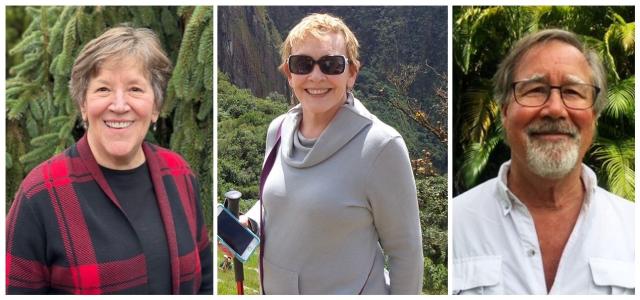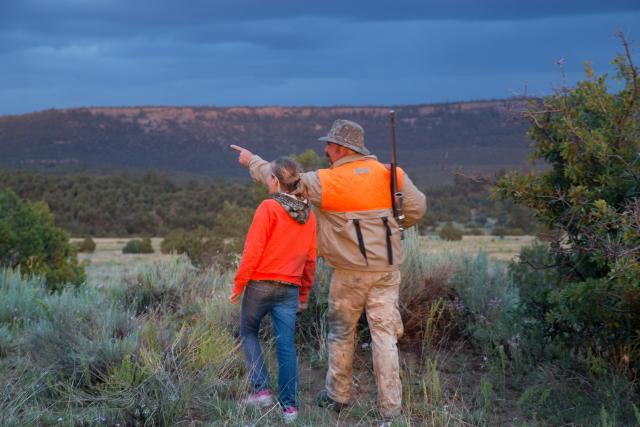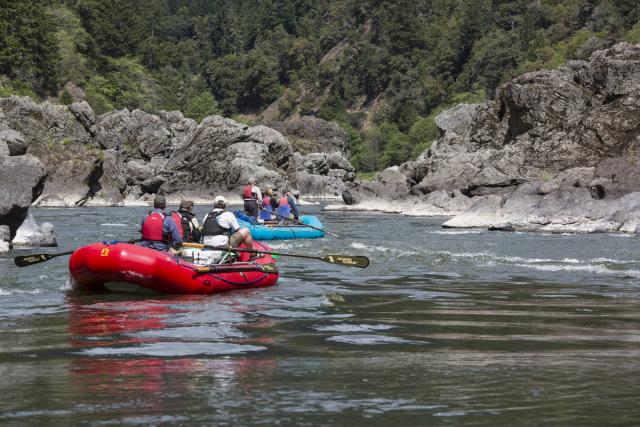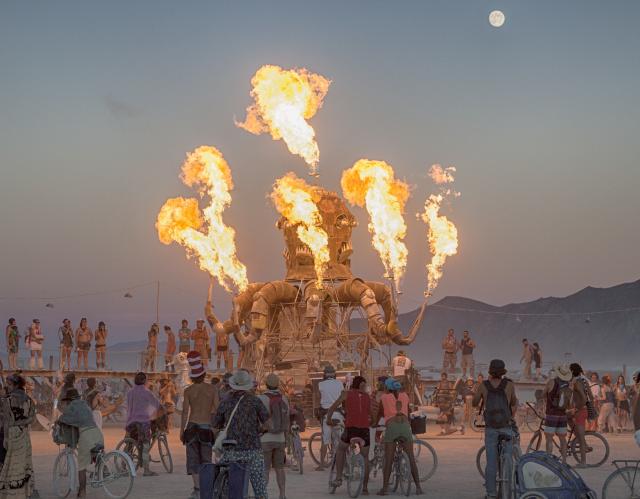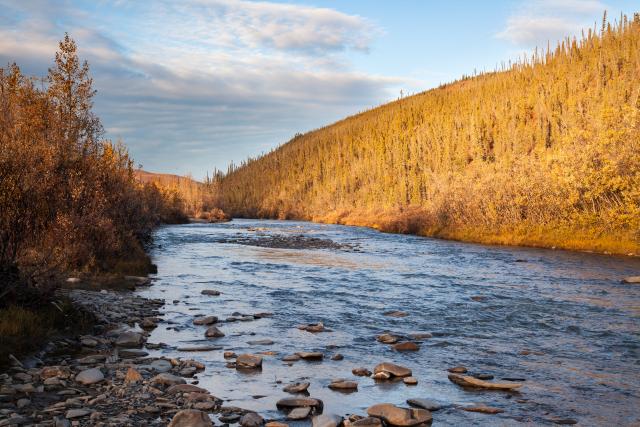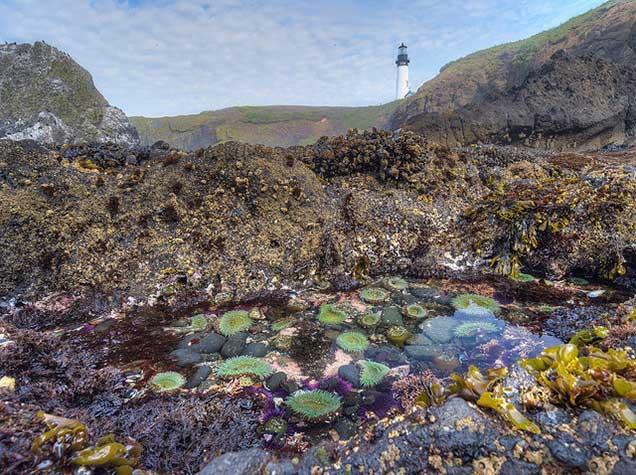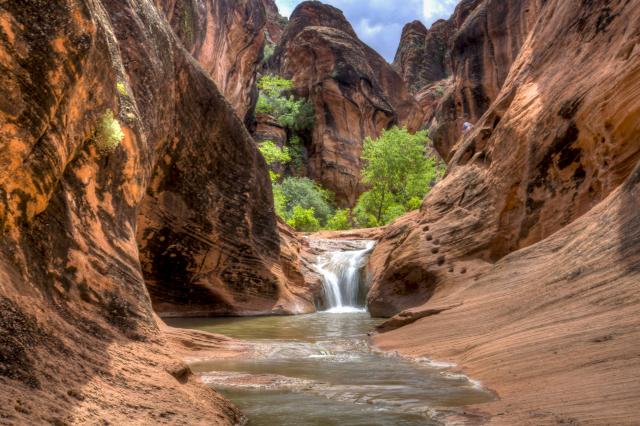Three past officials reflect on the National Landscape Conservation System (Part 2 of 2)
Listen
Subscribe
Related Content
In 2000, Secretary of the Interior Bruce Babbitt authorized the creation of the National Landscape Conservation System, the BLM's official directorate for managing National Conservation Lands. In this episode, we reflect on the early years of the NLCS and how BLM created the structure to manage these beautiful and iconic locations with three people who led the program: Elaine Marquis-Brong, Elena Daly, and Carl Rountree.
Transcript
NARRATOR, DAVID HOWELL, Senior Communications Specialist: You’re listening to “On The Ground: a Bureau of Land Management Podcast.” Welcome to Part 2 of our look back on the creation of the National Landscape Conservation System. I’m David Howell.
In part one, we looked back on some of the Congressionally-designated areas that had been given to the BLM to manage starting in the late 1960s. These included some spectacular landscapes like Wild and Scenic Rivers, National Scenic and Historic Trails, National Conservation Areas, Wilderness and Wilderness Study Areas.
Three Directors’ Perspectives
NARRATOR: In the mid-1990s, President Bill Clinton created the Grand Staircase-Escalante National Monument and gave management responsibilities to BLM. This was a new responsibility, and the President gave the Bureau three years to create a management plan with the help of local officials and the public.
In January 2000, President Clinton designated two more national monuments, and another four in June. It quickly became clear to then Secretary of the Interior Bruce Babbitt and BLM Director Tom Fry that they needed a staff to manage a growing workload in specially-designated areas. For this, Director Fry tapped Elaine Marquis-Brong as the first director of the new office of the National Landscape Conservation System, or NLCS.
ELAINE MARQUIS-BRONG, Former NLCS Director (2000-2003): They were considered to be kind of a living history-type of monument, bringing with it the historic uses if it was compatible within the monument language. That was important to Secretary Babbitt because he didn't see them as just a little lockaway part of our landscape, but part of a continuation across the landscape of conservation, and uses, and watershed management, and restoration – the whole bit.
HOWELL: That probably surprised a few people where you're… they're expecting to go to a National Monument and they're finding out there's grazing going on…
MARQUIS-BRONG: Yeah.
HOWELL: …in the middle of it!
MARQUIS-BRONG: Yeah. And also hunting and fishing! Those uses were permitted. And, you know, the outdoor recreationists do love it, love the fact that they can go recreate in the public lands that way, at the same time trying to take care of it.
NARRATOR: By the end of the Clinton Administration in early 2001, the number of BLM National Monuments had grown to 15. But besides the monuments, the NLCS was also charged with administering hundreds of BLM wilderness and wilderness study areas, national scenic and historic trails, and wild and scenic rivers. Under the George W. Bush Administration, Elaine was asked to build these separate areas into a cohesive program.
MARQUIS-BRONG: And so, I just more or less said, “OK, no one would walk in and say, OK, we're gonna do away with the Fish and Wildlife refuges today. And oh, we’re going to get rid of all the monuments in the Park Service,” or any of that. So I said, most of our units were legislatively designated: all of our rivers – Wild and Scenic rivers – all of our [National Scenic and Historic] trails, a lot of the natural, like, research areas or natural areas have been designated legislatively. We only had a few monuments that were done through the Antiquities Act. And most people forgot that!
NARRATOR: At first, it was Elaine and an Administrative Assistant. Then she added a budget specialist, then two land planning specialists. Over the next three years, Elaine and her small but growing staff started crafting policies and procedures for managing the individual units as a system.
In 2003, Elaine Marquis-Brong was selected to be BLM’s State Director in Oregon and Washington. Her replacement was Elena Daly, who had worked most of her career as a manager in the field and faced an uphill battle building a program in a new Administration that had other priorities.
ELENA DALY, Former NLCS Director (2003-2008): So when you go into a job, and you know that it's not going to get the funding –you have to sit down and figure out what you're going to do with this organization.
DALY: There's an advantage to being under the radar. You can get a whole lot done, if you look at “What's our wild and scenic rivers policy gonna be?” Get those nailed down. “What are we gonna do about any of the other processes?” Because Elaine’s job was enormous. That was just… organizationally, was huge and she did a brilliant job. But then you have to start, while nobody's paying attention, get some things in place that the next group of people will know where to go.
HOWELL: When you came into this role, though -- I don't know, was it kind of a hodgepodge? The NLCS system itself is… I mean, it has responsibility for visitor centers, you got national scenic and historic trails, you've got wild and scenic rivers, as you said…
DALY: Yep.
HOWELL: …national monuments, wilderness areas. I mean, it's kind of, it's a little bit of “BLM in miniature,” but about these specially-designated areas, right?
DALY: Yes. Yeah. And you had to work things out… Grazing in the national monument: Well, who runs it? You know, how do you work that out? There's no mineral development in most of these places, so that's not a particular issue, although in Wyoming it was an issue with the trails. And those are the kinds of processes that were needed. But I think part of it has to be that you have to – and it falls on the director – you have got to understand that your success should not be measured necessarily by you alone. It should be measured by how all of you work together.
NARRATOR: Under Elena’s leadership, the NLCS was able to create a firmer internal structure in relation to the rest of BLM’s managed lands and priorities. She also expanded BLM’s partnership program, including working with a new Conservation Lands Foundation, created by political and conservation leaders in 2007. Elena Daly led the NLCS program for five years before retiring from federal service in 2008.
When President Barack Obama entered office in 2009, Congress passed the Omnibus Public Land Management Act that March. It designated more wilderness areas and national monuments to be managed by the federal land management agencies, created several national conservation areas on BLM managed lands, and it codified the National Landscape Conservation System, making it a Congressionally-recognized program and bringing additional funding.
The sudden influx of money and Congressionally designated areas brought new challenges for a new NLCS Director, Carl Rountree, who previously had been managing BLM’s national budget. Carl said that he enjoyed broad support during his tenure from Interior Secretaries Ken Salazar and Sally Jewell, as well as the support of the independent Conservation Lands Foundation, which leveraged its influence to find money for the program. During this time, BLM expanded its partnerships and environmental education and outreach programs.
And with the new designation came a mandate to create a long-term strategic plan for National Conservation Lands. This process started with a large conference of specialists at all levels of the BLM.
CARL ROUNTREE, Former NLCS Director (2009-2015): There were over three hundred people who attended, and every state director attended, and the breakout sessions included everything from public involvement, policy – just a slew of different areas that we wanted to explore. And then at the end, we actually had [Secretary Ken] Salazar come out and speak at the event. And then at the end, the state directors each got up and went through and outlined what each of their program areas came up with, and then that went into the pot.
NARRATOR: From that conference, Carl Rountree and his staff created a 15-year National Conservation Lands Strategy, which was published in 2010, and was meant to carry the National Landscape Conservation System through to 2025. Under his leadership, the NLCS began to solidify into the entity that it is today, the National Conservation Lands, with 30 national monuments, 25 national conservation areas, 263 Congressionally designated wilderness areas, 487 wilderness study areas, and more than 8,700 miles of National Scenic and Historic Trails and Wild and Scenic Rivers. All told, these places cover more than 37 million acres, or about 15 percent of all BLM public lands.
Carl reflected on one of his conversations during his tenure with former National Park Service Director Jon Jarvis.
ROUNTREE: He said, you know, we need a National Conservation Lands [system]. We need something between public lands and the national parks. And there is a very definite need for units of the National Landscape Conservation System. So even he saw… [crosstalk]
HOWELL: Something that's maybe a little bit more wild but not as curated, necessarily?
ROUNTREE: Exactly. And you know, not “driving into an area and being told what to do and how to do it.” You know, giving people enough information to hopefully not get themselves killed the first one hundred yards down the trail, you know? But it was all about, you know, self-exploration. You know? That was the best way, I think, of describing our visitor interaction at the time. All the states, you know, were to different level or degrees doing a great job at doing that.
NARRATOR: In our previous episode, I spoke with Jim Kenna, the former BLM California State Director who, during his tenure, had responsibility for the Bureau’s first National Conservation Area, the King Range. I asked him how he thought conservation stacked up against BLM’s multiple use mandate, and he told me that they are connected and inseparable.
JIM KENNA, Former BLM California State Director: It is what BLM will be remembered for. The job that we do on the conservation side of the ledger is the most, obviously persistent across time. You know, things will come and go, various land uses. And sometimes those things are necessary and important. But the degree to which we hand things off in good shape to generations out in front of us is really the test of the job that we're doing.
NARRATOR: BLM is celebrating the 25th Anniversary of the National Landscape Conservation System throughout 2025. You can find more information about National Conservation Lands on our website, BLM.gov.
Special thanks to our past NLCS Directors -- Elaine Marquis-Brong, Elena Daly, and Carl Rountree – for contributing to this episode. Thanks also to Jim Kenna, former BLM California State Director.
There are some amazing places to discover on public lands, and we would love to see you at one of these special areas! I’m David Howell, and we’ll see you out there, “On The Ground.”



